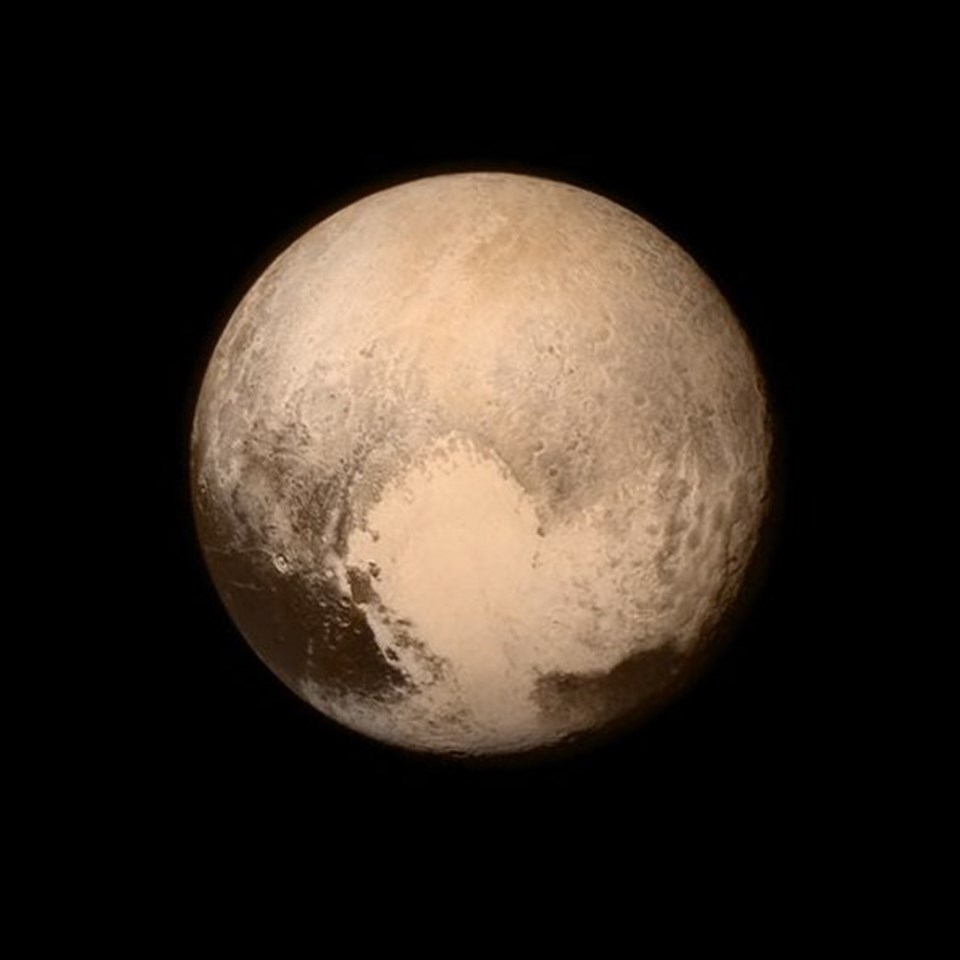A made-in-Victoria mapping system aided the historic flyby of Pluto by NASA’s New Horizons spacecraft Tuesday, a trip billions of kilometres from Earth that gives astronomers an unprecedented look at the dwarf planet.
The complex star map that helped the fastest spacecraft ever built navigate toward Pluto was pioneered by Stephen Gwyn, a data specialist at the Canadian Astronomy Data Centre in Victoria.
On its approach to Pluto at nearly 50,000 kilometres an hour, New Horizons had to carefully avoid collisions with small moons, rocky dust and icy space debris.
This is where Gwyn’s stellar map played a crucial role.
Gwyn gathered images from the Canada France Hawaii Telescope and developed an analysis system to pinpoint precise locations of background stars. That information has helped with navigation, including avoiding collisions by being able to tell the difference between nearby debris and distant stars.
As New Horizons approached, Victoria astronomers were thrilled to see the spacecraft’s first close-up images of Pluto, with its peach-coloured heart shape in the middle and dark regions around the equator.
“We’re going to one of the last unexplored areas of the solar system, a region about which we knew almost nothing before,” said Michele Bannister, a post-doctoral fellow at the National Research Council of Canada’s Herzberg centre in Victoria. Bannister was not involved in Gwyn’s project but is using his technology for her own outer solar system research.
“These are the locations that tell us how our solar system formed and evolved, so it’s incredibly exciting to see it up close. And to have Canada part of that is really quite something,” Bannister said.
Launched on Jan. 19, 2006, New Horizons has been photographing Pluto and its moons for months but Tuesday marked its closest approach at 12,400 kilometres at 4:49 a.m. Pacific time.
But it wasn’t until 13 hours later that the spacecraft sent word back that it had succeeded. Pictures from the closest approach are expected to be released today.
At about 4.7 billion kilometres from Earth, Pluto is located in what’s called the Kuiper Belt, the icy region beyond Neptune’s orbit.
Jon Willis, an astronomer and University of Victoria professor who has been closely following the New Horizons mission, said the pivotal involvement of Victoria-based astronomers is something of which we should be proud.
“Canadian astronomers are involved in this project by virtue of their talents alone. No one has bought them a way into this project,” said Willis, noting recent budget cuts to the Canadian Space Agency.
“They’ve simply said we can contribute scientifically and NASA has recognized that.”
Seven months after New Horizons lifted off, Pluto was demoted to dwarf planet status. Scientists in charge of the $720-million mission hope the new observations will restore Pluto’s position as a planet.
Tuesday’s encounter occurred 50 years to the day after Mariner 4’s flyby of Mars that yielded the first close-up pictures of the red planet.
JJ Kavelaars, an astronomer based at Victoria’s Canadian Astronomy Data Centre, was also involved in the project, tasked with finding a target of exploration for New Horizons after the Pluto mission ends in August.
“There’s two separate projects. One of them was to get to Pluto and the other one was what we do after Pluto, and there’s been major Canadian involvement with both of them,” Bannister said.
Bannister’s research team is using the mapping catalogue developed by Gwyn, as well as the high-powered Canada France Hawaii Telescope, to search for new objects in the outer solar system.
“It’s quite remarkable. Victoria is one of the major centres of Kuiper Belt research at the moment in Canada and definitely in the world,” Bannister said.
Gwyn is away from the office this week and was not available for comment Tuesday.
— With files from the Associated Press



